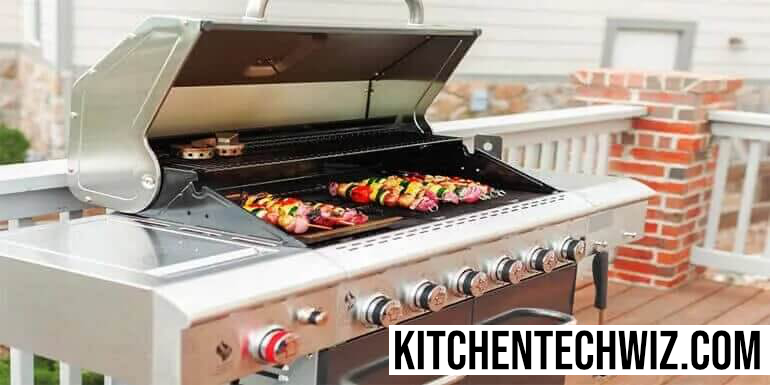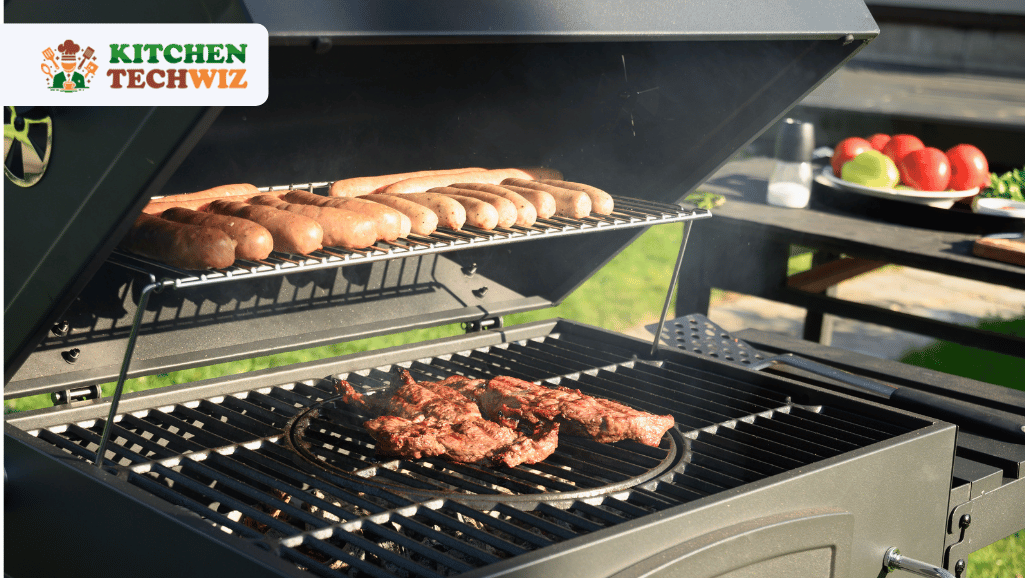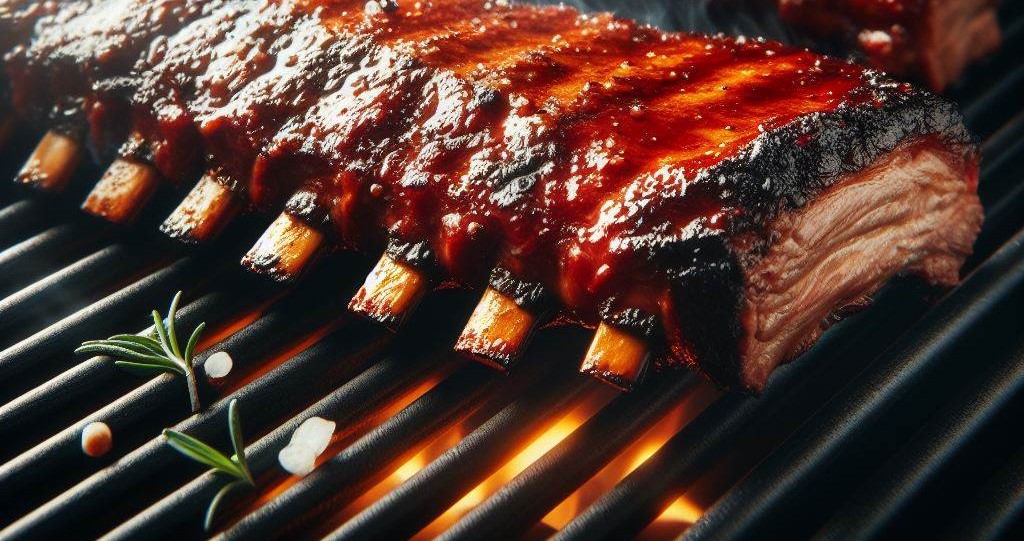Are you tired of running out of gas in the middle of a barbecue? Or perhaps you’ve become concerned about the environmental impact of using traditional propane tanks for your grill? Converting your gas grill to propane might just be the solution you’ve been searching for. Not only does it provide a convenient and reliable source of fuel, but it also offers a more sustainable option for outdoor cooking enthusiasts.
Nowadays, grills come in various types in terms of what they use to run. Some are still conventional and still use charcoal while the ones that are more modern utilize natural gas or propane.
Well, today, we want to talk about propane and how you can transform your gas grill to utilize the same. Propane comes with numerous advantages with the biggest one being that it makes your grill portable.
Moreover, propane is more available for purchase compared to other forms of gas. While converting gas grill to propane is possible, it can be difficult and dangerous.
Therefore, if you want to do it on your own at home, you need to follow instructions to guarantee your safety.
Step By Step Process For Conversion
Step 1: Check Your Gas Grill
The first thing you want to do is to check if your gas grill is capable of being converted to use propane because otherwise it would be a lost cause.
You can find this information in your grill’s user manual but if it is unavailable, you can always reach out to the manufacturer. They can also advise on the conversion kit you need to complete the conversion.
Once you have confirmed that your gas grill can be converted, you want to use a flat screwdriver to twist and remove the cap of your pressure valve.
May Love To Read: Best budget propane gas grill
Step 2: Shut Off Gas Supply
The next thing to do is to shut off gas supply to your grill and disconnect the gas line. Take out any side or front panels to access the grill parts inside.
You then want to turn the nozzle over, take it out, and snap it back to its original position. After doing that, re-insert the cap into the valve and reinforce it so that the cap remains tightly secured.
Step 3: Remove Gas Regulators & Other Parts
Take out any openings and gas regulators intended for natural gas use and replace them with new parts meant for propane use.
Tightly secure the new fittings but do not replace the panels at this point. You want to rotate the top burner regulators down such that they get into contact with the pin used for LP setting.
Step 4: Check The Gas Connection
It is now time to check if any of the connections are leaking gas. The best way to test for gas leaks is by using soapy water.
Turn the gas supply on but not the burners and apply a small amount of the soapy water on the connections.
If you see bubbles, then there is a leakage, which means that you need to tighten the connection.
Step 5: Removing Handle & Set The Regulator
Locate the pilot screw, which is normally found behind the thermostat knob. Once you find it, remove the handle, and turn the regulator to the setting marked ‘LP’ in clockwise direction.
Put the thermostat back after doing this.
Step 6: Conversion Process
You are now a step closer to the end of the conversion process. You want to identify a wingnut that can be found under the burner baffle plate.
As soon as you locate the wingnut, you want to turn it anticlockwise.
Step 7: Tightening the Regulator & Connection
This is the last step, which involves tightening the safety regulator on the hood by turning it clockwise until fully reinforced.
After that, you can now look for any connection issues or leaks. If you do not find any, you can turn on the gas and plug power supply in.
It is also important to adjust the shutters to allow even distribution of propane gas throughout your grill.
May You Like: How long does a propane tank last
About Kits (what you need for this job)
Now that you know how to convert your gas grill to propane, you want to learn about the kit needed for the job.
Using a kit makes the conversion faster and easier. You do not have to get the kit from your grill’s manufacturer but the one you get has to be compatible with your grill.
Some kits work for a number of grills but it is advisable to use a kit designed specifically for your model. This increases the chances of the conversion being successful.
Before using a kit, you want to make sure that all the parts are present and in perfect working condition.
1. Regular or Universal Regulator
Sometimes, a conversion kit will contain all the parts required except the hose and regulator. For propane to function properly, it must have a regulator.
Moreover, prior to starting the conversion process, ensure that the tank is disconnected. You can always buy the regulator with the hose already connected.
It is important to ensure that the proper fittings are available for the perfect fit between the control assembly and the hose.
If your regulator is universal, you need to set it to propane usage by taking out the center screw body and setting the center protrusion to propane.
2. Burner Planes
There should be a burner jet for each burner in your conversion kit. For tube burners, it may not be necessary to change or replace because the diameter of the gas inlet is enough for propane.
However, in some cases, the gas inlet to the burner is too big and would need a replacement in order to be compatible with propane.
You should first inspect the burner jet on all your burners to ensure that they are of the right diameter. If your kit has the jets, all you need to do is unscrew the old jet and simply replace it with a new one.
3. Control Module
Gas should always leave the tank and flow through a valve into a control module where the knobs regulate gas flow into the burner.
Most times when converting natural gas to propane, the control module does not need to be replaced. If you have a larger grill with specialized control features, you may need a control module replacement.
Nevertheless, you will have to get used to the fact that you will be adjusting your flame differently because more gas will flow through the regulators at the knobs.
Final Thinking
As you can see, changing from gas grill to propane is not as difficult if you take precaution. The best way to do that is by using a conversion kit because it comes with detailed instructions.
Once the conversion is successful, you can now begin using your gas of choice.
Converting a gas grill to propane can be a great way to expand your grilling options and make use of a wider variety of fuel sources. It offers flexibility in terms of where you can use your grill and provides an environmentally friendly alternative for those looking to reduce their carbon footprint. Additionally, propane tends to burn cleaner than natural gas, resulting in less pollution and reduced maintenance needs for your grill.



![16 Best Tabletop Propane Gas Grills 2024: [Also Charcoal & Electric]](https://kitchentechwiz.com/wp-content/uploads/2021/04/Best-Tabletop-Propane-Grill-1.jpg)

Leave a Reply